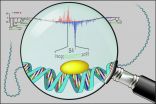(Press-News.org) Irvine, Calif., March 9, 2015 -- Long the stuff of science fiction, the disembodied "brain in a jar" is providing science fact for UC Irvine researchers, who by studying the whole brains of fruit flies are discovering the inner mechanisms of jet lag.
To do this, Todd C. Holmes, professor of physiology & biophysics in the UCI School of Medicine, and colleagues used imaging technology to make movies of fruit fly brains kept alive for six days in a petri dish. The scientists captured the activity of individual circadian clocks at single-cell resolution with an extremely sensitive low-light camera in order to determine how the circadian clock circuit is "reset" by light.
The study marks the first time researchers have seen in real time how specific neurons in intact circadian neural networks react to light cues that are comparable to rapid travel across time zones, such as flying from Los Angeles to Chicago. Study results appear online in Current Biology.
Most organisms make daily adjustments to their activity and metabolism to synchronize with environmental signals - daylight being the most powerful circadian cue. The scientists found that desynchronization of circadian neurons is a key feature of light-induced jet lag and suggest that treatments accelerating this desynchronization before travel may speed recovery afterward.
"Remarkably, our work indicates that the way you feel while jet-lagged exactly reflects what your nervous system is experiencing: a profound loss of synchrony," Holmes said.
He explained that a single light pulse cues the biological clock of the fruit fly brain to shift two hours ahead of its original schedule through a process the researchers call "phase retuning." This is characterized by a circadian circuit-wide pattern of brief desynchrony followed by the gradual emergence of a new state of network synchrony.
The scientists propose that temporarily weakening synchronization among neurons governed by circadian patterns allows for more rapid adaptation (an estimated two days) by enabling phase retuning to a new time zone's cues. Normally, Holmes said, circadian circuit light response - i.e., jet lag recovery - takes place over four days for the time shift tested. A larger time shift, such as the one experienced in flying from Los Angeles to London, would likely require a longer time for recovery.
"That two-day difference is quite a bit if it means you feel great from the beginning of your arrival, say, in Italy," Holmes noted. "You're going to feel bad on the plane in any event, so it's best to get the adjustment over with so you can enjoy your destination. I'm certain this will lead to treatments that'll have a big impact on our travel practices."
"These results literally and figuratively bring the inner workings of biological clocks 'into the light,'" said Logan Roberts, a graduate student researcher in Holmes' lab and the study's first author.
"This work illustrates in realtime how the network of daily clocks in the brain adjusts to synchronize with the local light cycle," added Erik Herzog, a circadian biology expert at Washington University in St. Louis who was not involved in the study. "With extraordinary cellular resolution, the researchers show that some cells shift faster than others following a pulse of light. This might become a useful therapy in treating jet lag or the growing problem of 'social jet lag,' where people keep different schedules during the week than on the weekends."
INFORMATION:
Alexis Galschiodt and Jerry Houl of UC Irvine; Takako Noguchi and David Welsh of UC San Diego; and Tanya Leise of Amherst College also contributed to the study, which was supported by the National Institutes of Health (grants NS046750, NS078434, GM102965 and GM107405) and the National Science Foundation (grants IBN-0323466 and DGE-1321846).
About the University of California, Irvine: Currently celebrating its 50th anniversary, UCI is the youngest member of the prestigious Association of American Universities. The campus has produced three Nobel laureates and is known for its academic achievement, premier research, innovation and anteater mascot. Led by Chancellor Howard Gillman, UCI has more than 30,000 students and offers 192 degree programs. It's located in one of the world's safest and most economically vibrant communities and is Orange County's second-largest employer, contributing $4.8 billion annually to the local economy. For more on UCI, visit http://www.uci.edu.
Media access: Radio programs/stations may, for a fee, use an on-campus ISDN line to interview UC Irvine faculty and experts, subject to availability and university approval. For more UC Irvine news, visit news.uci.edu. Additional resources for journalists may be found at communications.uci.edu/for-journalists.
More than two years after Washington legalized marijuana, parents and teens may be hazy on the specifics of the law, if the findings of a new study are any indication.
University of Washington research, published recently in Substance Use & Misuse, found that only 57 percent of Washington parents surveyed knew the legal age for recreational marijuana use and just 63 percent knew that homegrown marijuana is illegal under the law.
And while 71 percent of 10th-graders correctly identified the legal age, fewer than half (49 percent) knew how much marijuana can legally ...
MISSOULA - Researchers at the University of Montana, Princeton University, Stanford University and Rutgers University, among others, are collecting new measurements of tropical forests to gain a better understanding of how they respond to seasonal climate variations.
The new information helps predict how the global tropics may react to future climate change. These findings are detailed in a paper titled "Photosynthetic seasonality of global tropical forests constrained by hydroclimate," which was published in Nature Geoscience this month.
"A better understanding ...
The relationship between human disease and environmental management has been the subject of extensive research, especially given the recent outbreaks of Ebola, SARS and other zoonotic infectious diseases that transmit from animals to humans.
The fieldwork of UC Santa Barbara community ecologist Hillary Young is a good example of researchers' continuing effort to understand exactly how environmental management affects disease emergence. In East Africa, Young examines the direct impacts of human disturbance on landscape and wildlife, as well as a variety of factors affecting ...
Tropical Cyclone Haliba formed east of the island nation of Madagascar in the Southern Indian Ocean and is now affecting the La Reunion and Mauritius islands. NASA's Terra satellite passed over Haliba on March 9 and captured an image of the storm that showed the eastern quadrant was affecting the two smaller islands.
The Moderate Resolution Imaging Spectroradiometer (MODIS) instrument aboard NASA's Terra satellite captured a visible image of Tropical Cyclone Haliba on March 9 at 06:35 UTC (2:35 a.m. EDT). The image showed both La Reunion and Mauritius islands were covered ...
Although many people value receiving information about incidental findings identified from genomic sequencing, not everyone wants to know about genetic conditions regardless of potential health implications, found a study of Canadian preferences in CMAJ (Canadian Medical Association Journal).
An incidental finding refers to discovery of a genetic condition that may cause a disease, but the finding is unrelated to why genomic testing was initially ordered by the physician. For example, a test to determine if there is a genetic cause of a patient's colon cancer may find ...
In a screen of more than 100,000 potential drugs, only one, harmine, drove human insulin-producing beta cells to multiply, according to a study led by researchers at the Icahn School of Medicine at Mount Sinai, funded by JDRF and the National Institutes of Health, and published online today in Nature Medicine.
Diabetes results from too few insulin-producing "beta cells" in the pancreas secreting too little insulin, the hormone required to keep blood sugar levels in the normal range. The disease affects 380 million people worldwide, and leads to major medical complications: ...
COLLEGE PARK, Md. -- An analysis of changes to the climate that occur over several decades suggests that these changes are happening faster than historical levels and are starting to speed up. The Earth is now entering a period of changing climate that will likely be faster than what's occurred naturally over the last thousand years, according to a new paper in Nature Climate Change, committing people to live through and adapt to a warming world.
In this study, interdisciplinary scientist Steve Smith and colleagues at the Department of Energy's Pacific Northwest National ...
Activity in a brain area known as the dorsal posterior insula is directly related to the intensity of pain, a brain imaging study of 17 people has found.
Researchers at the Oxford Centre for Functional Magnetic Resonance Imaging of the Brain used a new brain imaging technique to look at people experiencing pain over many hours. Activity in only one brain area, the dorsal posterior insula, reflected the participants' ratings of how much the pain hurt.
These results, published in the journal Nature Neuroscience, could help detect pain in people with limited communication ...
Scientists have discovered another 15 genetic 'hot-spots' that can increase a woman's risk of developing breast cancer, according to research published today (Monday) in Nature Genetics.
In a study funded by Cancer Research UK*, scientists compared tiny variations in the genetic make-up of more than 120,000 women of European ancestry, with and without breast cancer, and identified 15 new variations - called single nucleotide polymorphisms (SNPs) - that are linked to a higher risk of the disease.
This new discovery means that a total of more than 90 SNPs associated with ...
Kansas City, MO. -- All the cells in an organism carry the same instruction manual, the DNA, but different cells read and express different portions of it in order fulfill specific functions in the body. For example, nerve cells express genes that help them send messages to other nerve cells, whereas immune cells express genes that help them make antibodies.
In large part, this highly regulated process of gene expression is what makes us fully functioning, complex beings, rather than a blob of like-minded cells.
Despite its importance, researchers still do not completely ...


